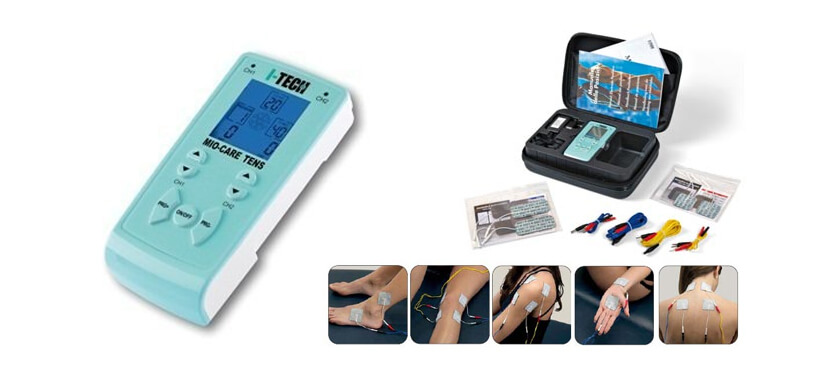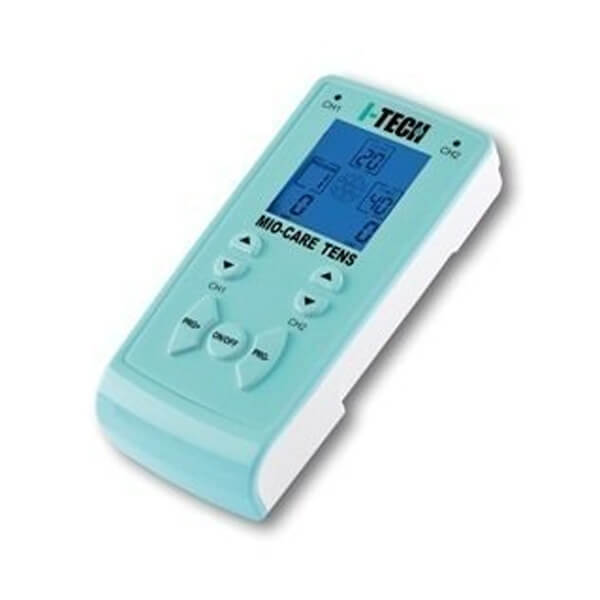

20 PROGRAMS more than 300 applications
Ideal if you want pain relief or to resolve pain linked problems, but do not need any firming or muscular toning actions that an athlete might need.
CONTENTS
MAIN FEATURES
PROGRAMS
| Tens conventional (rapid) | Vascularization | Epicondylitis |
| Tens endorphinc (delayed) | Muscle relaxant | Epitroclea |
| Tens maximum values | Haematomas | Periarthritis |
| Inflammatory | Atrophy prevention | Microcurrent |
| Neck pain/cervicogenic headache | Atrophy (trophism rehabilitation) | Stress incontinence |
| Backache/sciatic pain | Hand and wrist pain | Urgency incontinence |
| Sprains/bruises | Plantar stimulation |
WAVEFORM OR STORED PROGRAMS?
A lot of cheap TENS devices on market show a large quantity of stored programs. First of all, we need to point out that the number of stored programs cannot be confused with number of names or treatments.
Many manufactures changes names and programs in the way to confused the customer: an unique TENS CONVENTIONAL program can be applied at 50 different body areas, but it's always the same program with the same target. So, one program with 50 applications!
The programs are different each other when they differ for one or more of the following characteristics: impulse width, working frequency, stimulation time. For example, conventional TENS works between 70 and 150 Hz, with an impulse width of 50/70 µsec. and with a therapy treatment time of at least 40 minutes.
TENS endorphinic works between 1 and 4 Hz, with an impulse width of 250/300 µsec. and with a therapy treatment time of at least 20 minutes. The two therapy have different purposes: the first application gives an immediate but short lasting decrease of pain, the second one the decrease is longer but more lasting.
This is only an example to shown the difference between electrostimulators: for good effects the most important thing is to use well design and projected devices, with the correct waveforms for the specific treatments of different pathologies.
THIS IS THE GOAL OF MIO-CARE TENS AND IACER!
